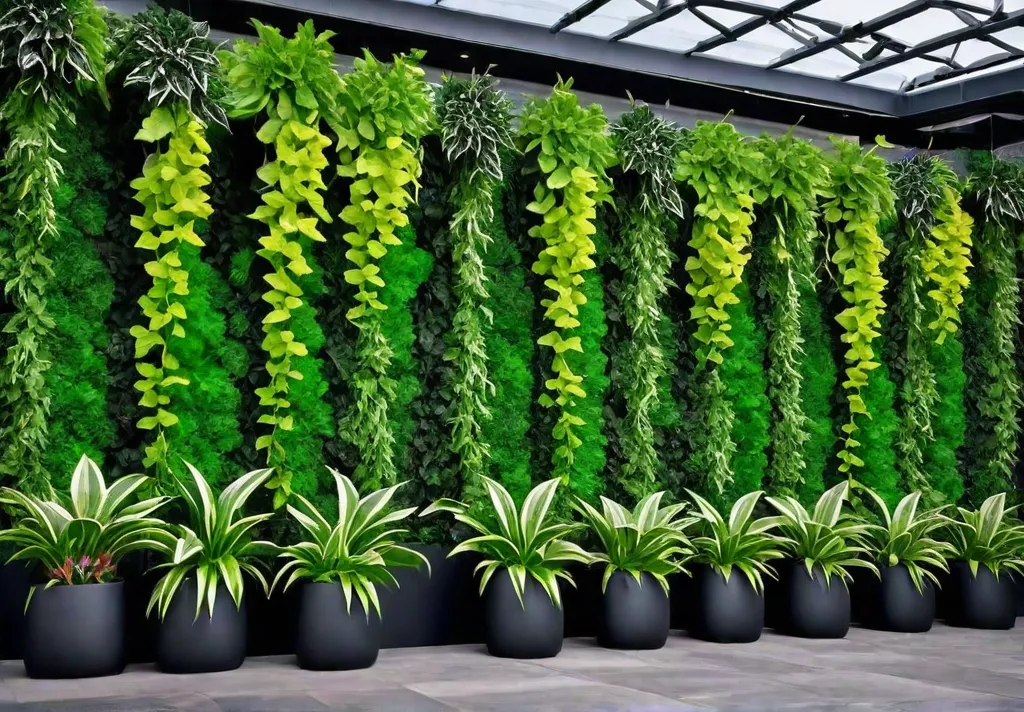Are you tired of looking at that plain, boring patch of dirt in your backyard? It’s time to transform it into a vibrant, productive vegetable garden! As a home decorator and design blogger, I always seek new and innovative ways to spruce up outdoor spaces. And let me tell you, vegetable gardening is not just a hobby – it’s a game-changer for sustainable living and self-sufficiency.
In this article, I will share ten incredible vegetable garden design ideas to make your neighbors green with envy (pun intended!). From vertical gardens that maximize space to permaculture techniques that mimic nature, these concepts will help you create an outdoor oasis that’s beautiful and bursting with fresh, nutritious produce.
So, whether you have a sprawling backyard or a tiny balcony, get ready to roll up your sleeves and dive into the world of innovative vegetable gardening. Let’s get started!
Design Idea #1: Vertical Gardens
One of my favorite ways to maximize limited space is by going vertical with a garden. Vertical gardens are not only space-efficient, but they also add a stunning visual element to any outdoor area. Imagine a lush, cascading wall of tomatoes, cucumbers, and herbs – it’s like having your little piece of Eden right at home.
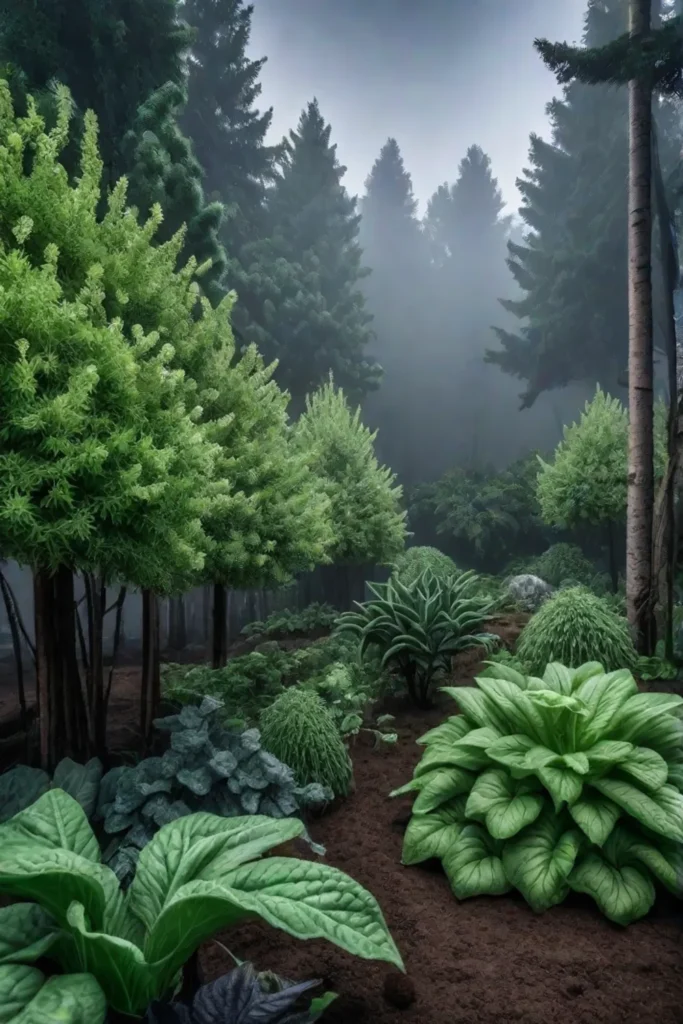
The beauty of vertical gardens is that they come in all shapes and sizes. You can use trellises, wall planters, or hanging baskets to support your climbing plants. And the best part? You can grow various veggies this way, from cucumbers and peas to compact tomato varieties.
Design Idea #2: Raised Beds
Another game-changer in vegetable gardening is the raised bed. These elevated planting areas not only look stunning but also offer a host of practical benefits. Elevating the soil above the surrounding ground can create a nutrient-rich, well-draining environment perfect for your plants.
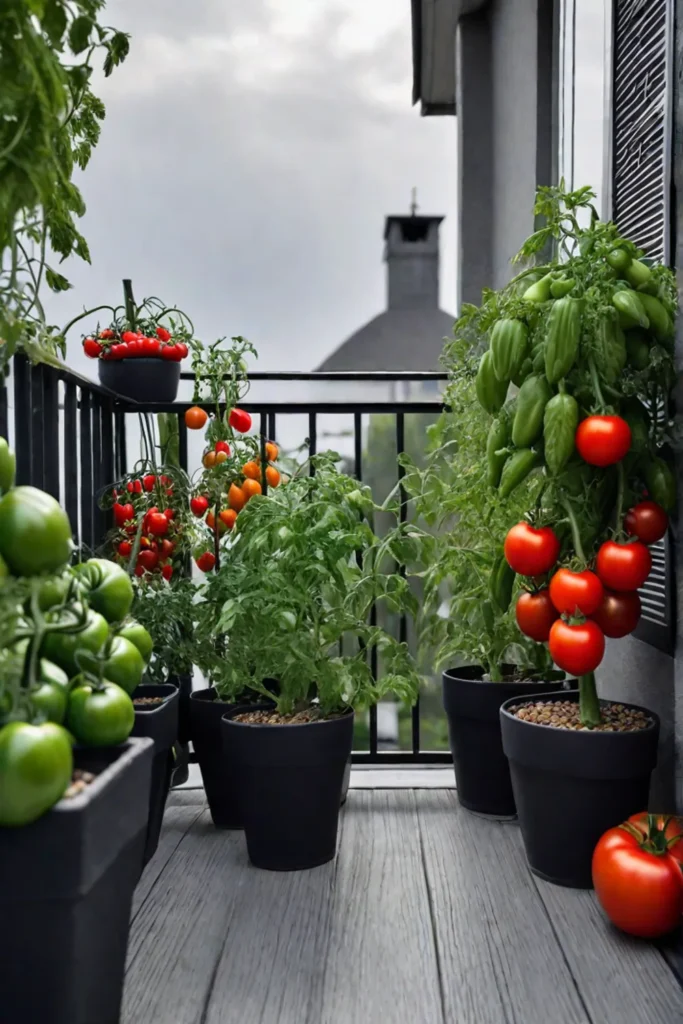
Raised beds come in various materials, from wood and stone to cinder blocks. And the best part? You can get creative with the layout, incorporating companion planting strategies to maximize yield and prevent pests. Imagine a vibrant mosaic of leafy greens, flowers, and juicy tomatoes – all thriving in your raised garden oasis.
Design Idea #3: Container Gardens
For those with limited outdoor space, container gardening is a game-changer. This versatile approach allows you to grow vegetables and herbs in pots, planters, and even repurposed containers. The beauty of container gardening is that you can easily move your plants around, chasing the sun or creating a visually stunning arrangement.
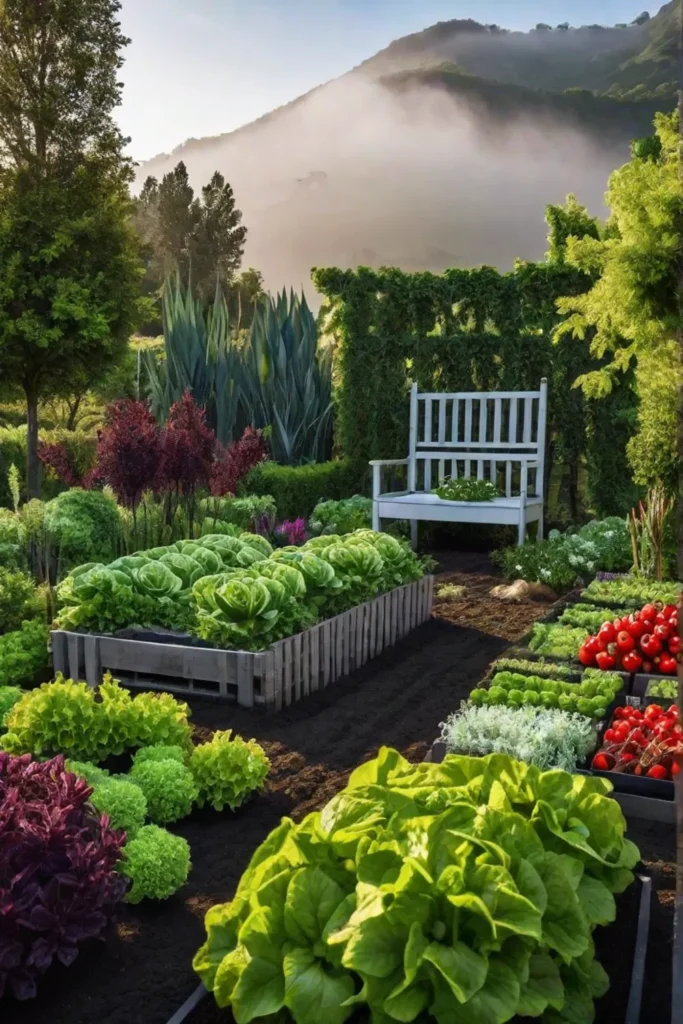
When it comes to containers, the options are endless. From classic terracotta pots to stylish wooden planters, the key is to choose the right size and drainage system for your plants. And don’t forget to use a high-quality potting mix to ensure your veggies thrive!
Design Idea #4: Keyhole Gardens
Consider the keyhole garden if you’re looking for a truly innovative and space-efficient garden design. Originating in Africa, this unique approach features a raised, circular bed with a notch in the front, allowing you to access the entire garden from a single point. The center of the bed houses a compost pile, which feeds the surrounding plants with nutrient-rich goodness.
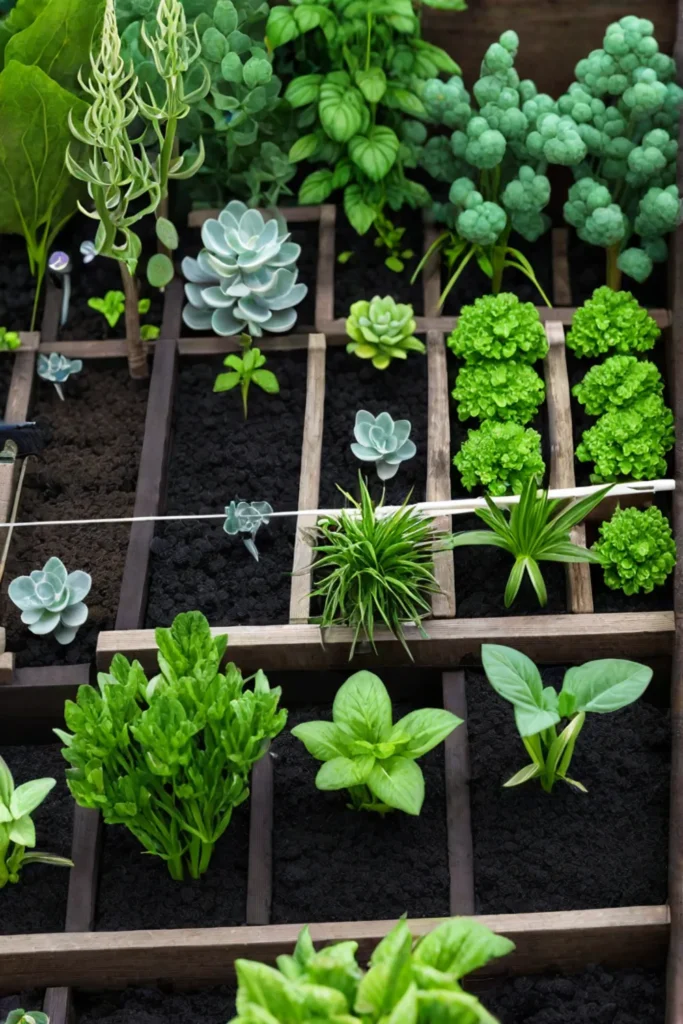
Keyhole gardens are perfect for small spaces, as they maximize every square inch of your outdoor area. Plus, the built-in compost system reduces your waste while nourishing your plants. It’s a win-win for both you and the environment!
Design Idea #5: Square Foot Gardening
Another ingenious vegetable garden design is the square-foot gardening method. Pioneered by Mel Bartholomew, this approach divides your growing area into one-foot square sections, making it easier to plan, plant, and maintain your garden.
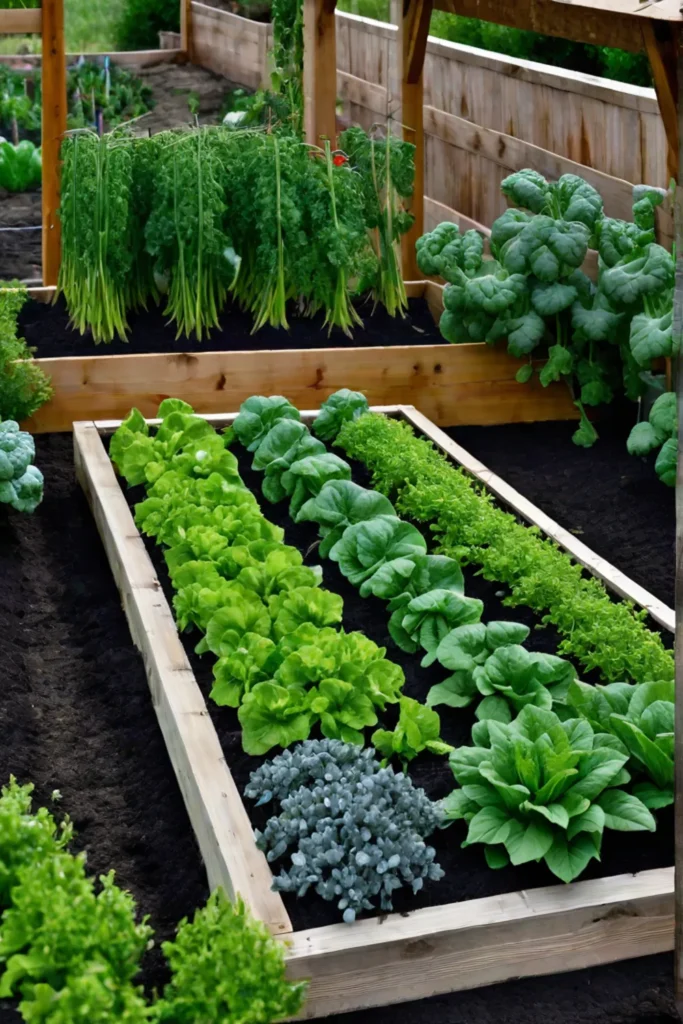
The beauty of square-foot gardening lies in its efficiency. By planting a specific number of plants per square foot based on their size and growth habits, you can maximize your yield in a limited space. Plus, the grid-like layout makes it a breeze to keep your garden weed-free and well-organized.
Design Idea #6: Hügelkultur Beds
If you want to create a sustainable and low-maintenance vegetable garden, consider incorporating the ancient German technique of Hügelkultur. This method involves building a raised, sloping bed filled with layers of organic materials, such as wood, branches, and compost.
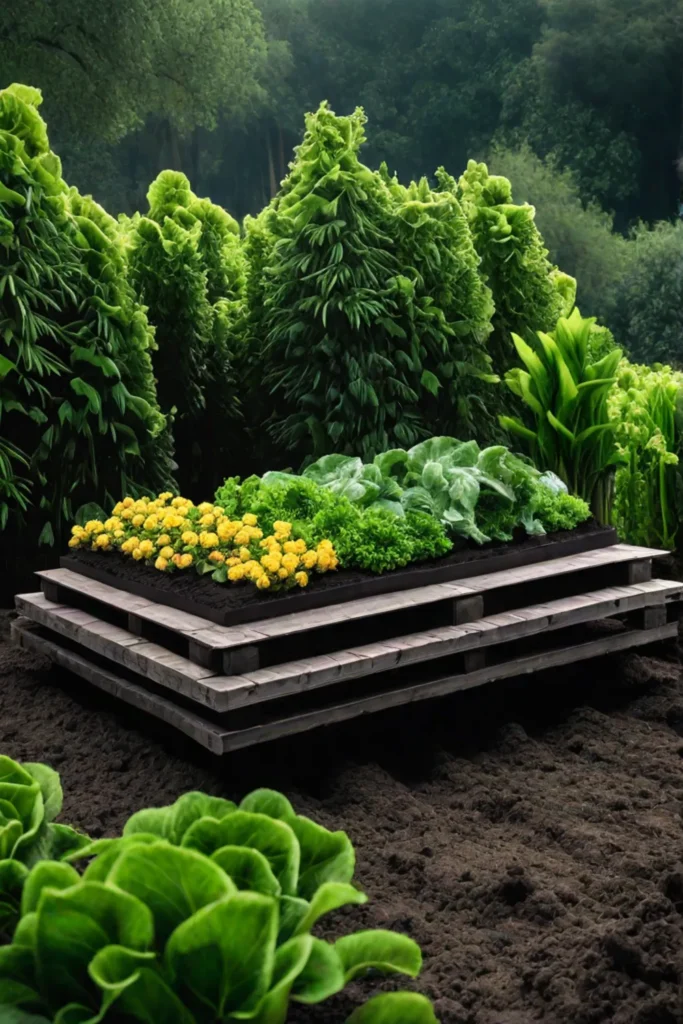
As the organic matter decomposes over time, it releases a steady supply of nutrients to your plants and acts as a natural water reservoir. Hügelkultur beds are productive and visually stunning, with their undulating, mound-like shape adding a touch of natural beauty to your outdoor space.
Design Idea #7: Permaculture Zones
Permaculture is all about creating self-sustaining ecosystems, and one of the key principles is using permaculture zones. These zones are designed to organize your garden based on the frequency of use and the types of activities involved, ensuring maximum efficiency and minimal waste.
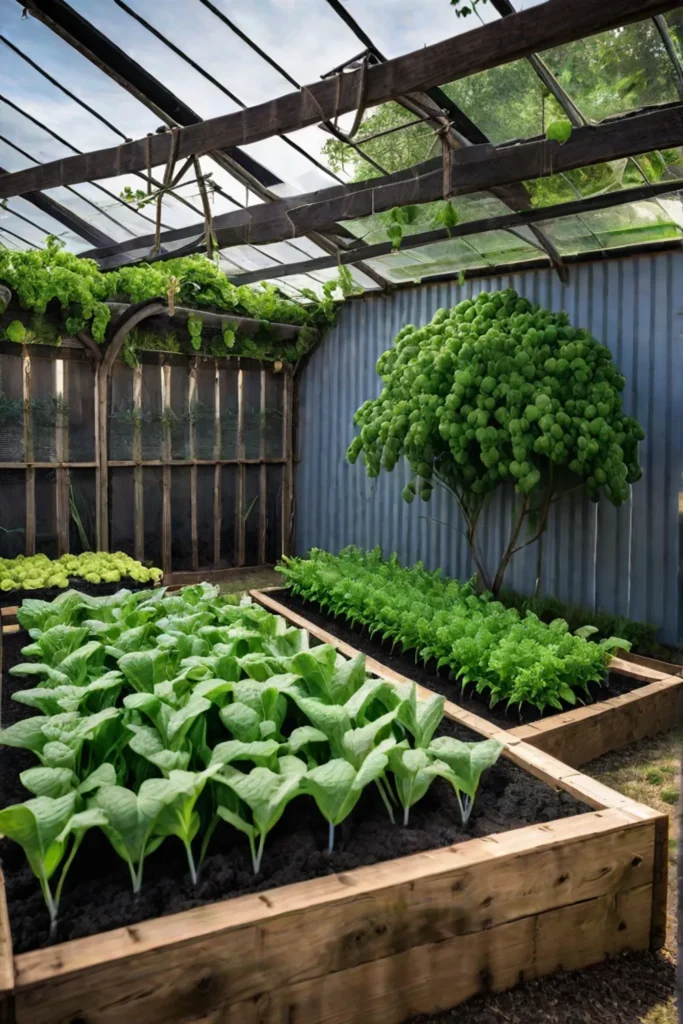
For example, Zone 1 might be closest to your home, where you’d grow your most frequently used herbs and salad greens. Zone 2 could be for your more extensive vegetable beds, while Zone 3 might be a more wild, less-maintained area for wildlife and natural habitats. By understanding and respecting the unique needs of each zone, you can create a thriving, balanced garden that works in harmony with nature.
Design Idea #8: Edible Forest Gardens
If you’re feeling adventurous, why not create an edible forest garden? This permaculture-inspired approach mimics the layered structure of a natural forest, with tall trees, understory shrubs, and ground-covering plants all working together to create a self-sustaining ecosystem.
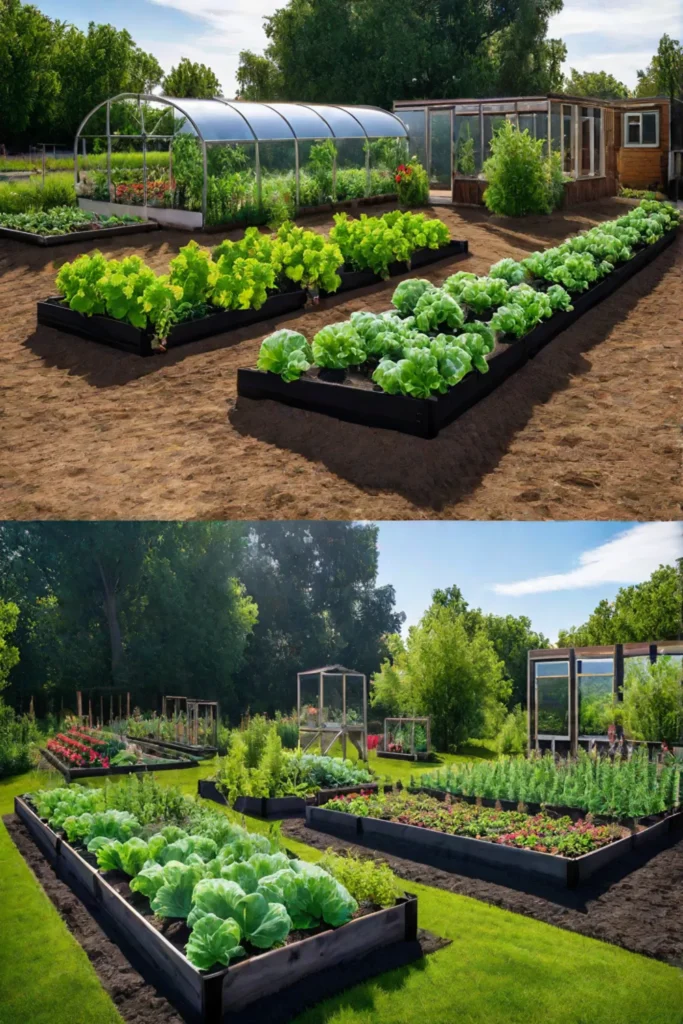
Imagine strolling through your own food forest, filled with diverse edible plants, from fruit trees and berry bushes to root vegetables and leafy greens. This design is not only visually stunning but also promotes biodiversity and reduces the need for constant maintenance.
Design Idea #9: Integrated Pest Management
As a home decorator, I create beautiful, harmonious spaces. And that includes my vegetable garden! That’s why I’m a big believer in Integrated Pest Management (IPM) principles. This holistic approach to pest control focuses on fostering a healthy, balanced ecosystem in your garden, where beneficial insects and natural predators can thrive and keep pests at bay.
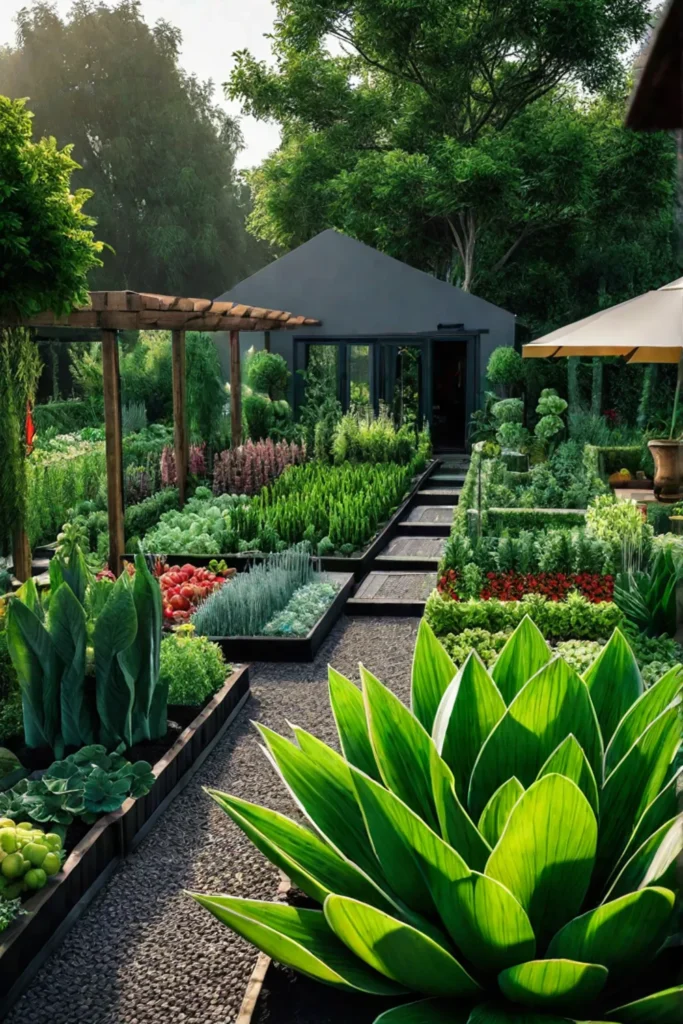
IPM involves various strategies, such as companion planting, crop rotation, and the introduction of beneficial insects like ladybugs and lacewings. Working with nature instead of against it can create a thriving, low-maintenance, productive, and visually appealing garden.
Design Idea #10: Community Gardens
Last but not least, I’m a huge fan of community gardens. These shared outdoor spaces provide a place to grow your own food and bring people together, fostering a sense of community and environmental stewardship.
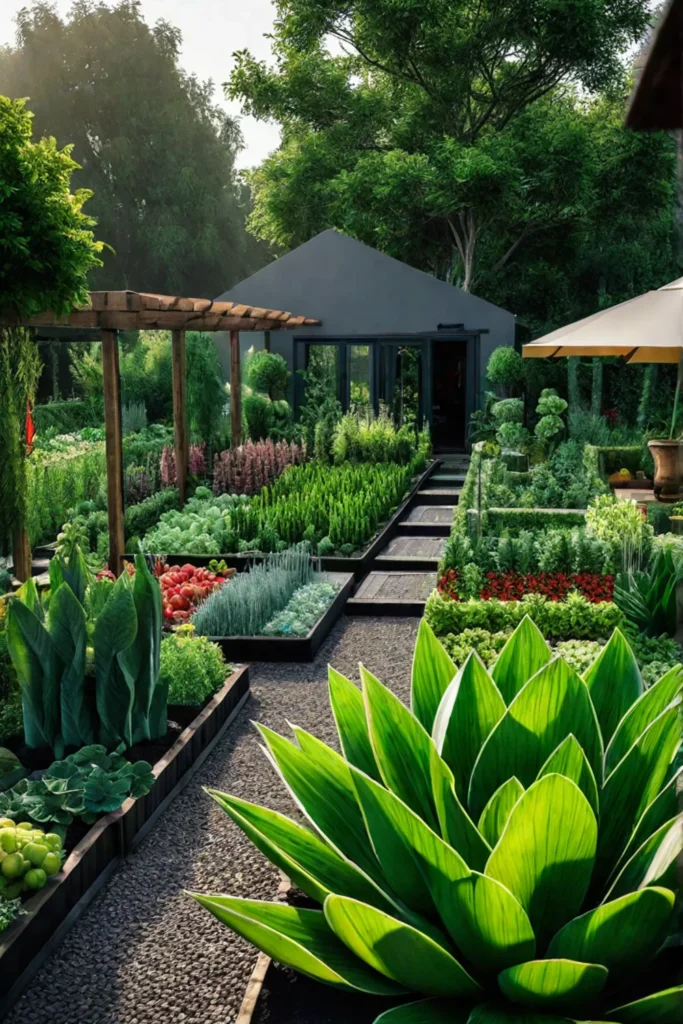
Whether you want to connect with your neighbors, teach your kids about the joys of gardening, or enjoy the fresh air and sunshine, a community garden can be a truly transformative addition to your local area. Plus, with the help of like-minded gardeners, you can tackle larger projects, such as building raised beds or installing a rainwater harvesting system, that might be more challenging to take on alone.
Conclusion
There you have it, folks – 10 incredible vegetable garden design ideas that will take your outdoor space to new heights. The possibilities for creating a vibrant, productive, visually stunning vegetable garden are endless, from vertical gardens and raised beds to permaculture-inspired concepts and community-driven initiatives.
So, what are you waiting for? Grab your gardening gloves and get ready to transform your backyard into a true oasis of fresh, homegrown goodness. And don’t forget to share your progress and successes with me on social media – I can’t wait to see what you create!
